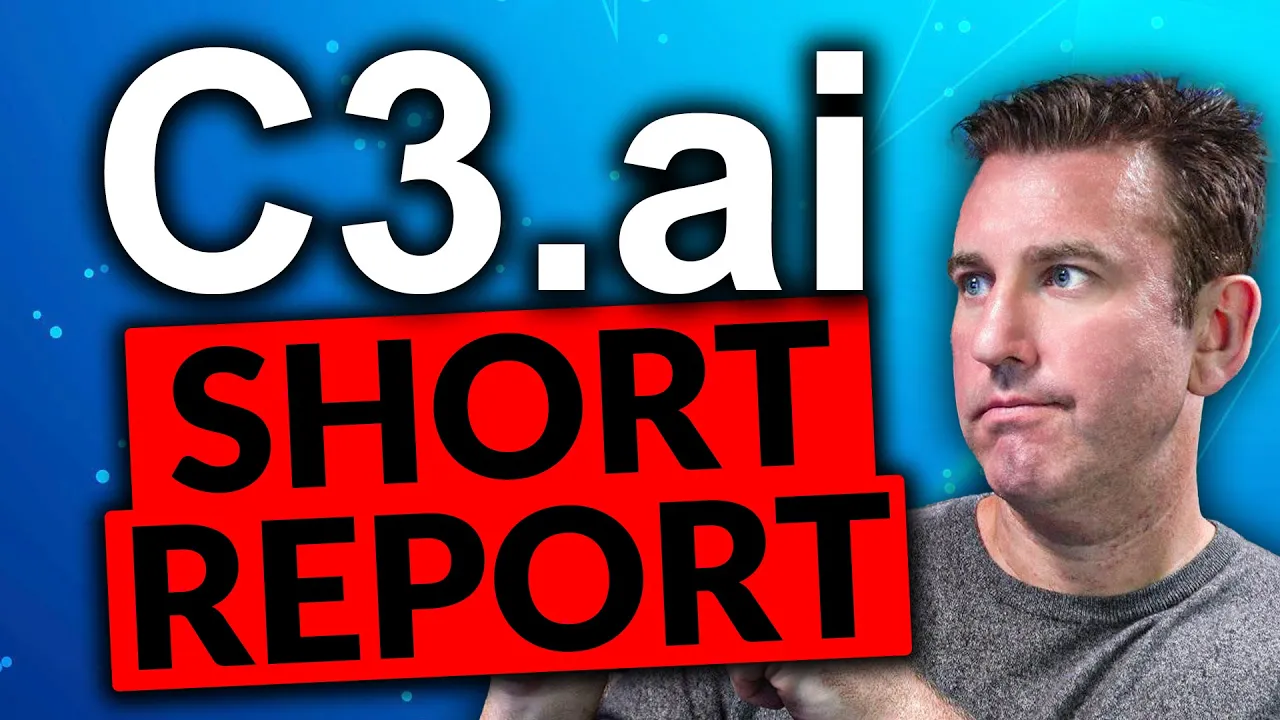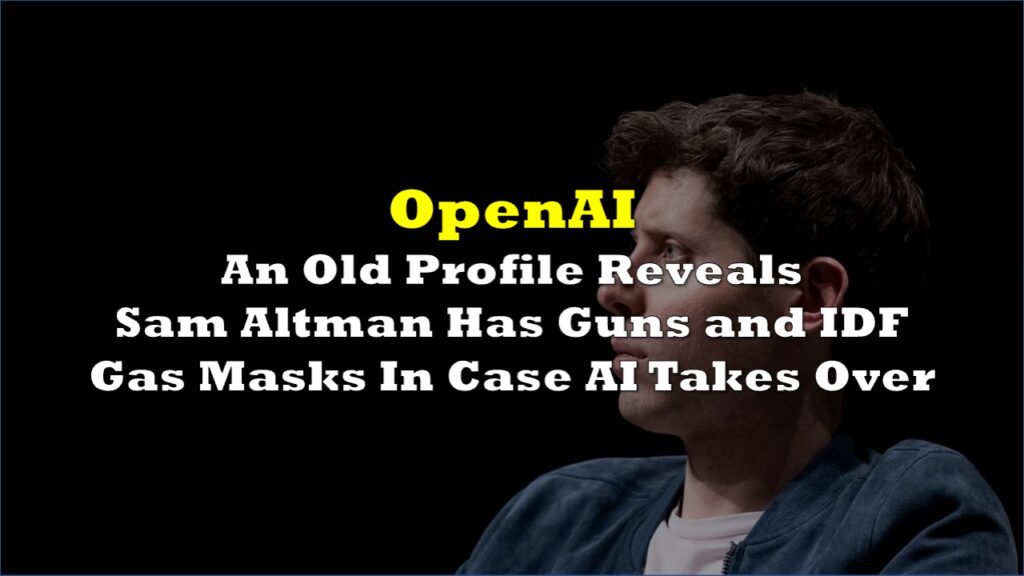Generative AI is going to be a really hot sector. The way the stock market works is that when a hot sector rolls in, lots of companies will try putting themselves in a position where they can attract capital flows looking to invest in the new hot sector.
In today’s video, we are going to discuss the recent short report by a short seller named Kerrisdale Capital, which claims that a company named C3.ai (NYSE: AI) has done exactly this, dressing themselves up as a generative AI company, and used questionable accounting to beef up their income generating strength.
Full disclosure. I don’t own any stock here and I’m not short – I have no affiliations. But I like looking at these reports because they are typically written by smart analysts, and from a learning standpoint there are things to learn from these reports.
Before we get into this one, I have to warn you, I read the report and it’s really long, and I think that is partly to scare retail investors into selling their shares. Which may or may not be for Kerrisdale and their network to cover their short into that selling. So, whether you are long or just want to learn, take a deep breath and look at the report with me, and decide for yourself if there is enough “there” there.
This company started as C3 Energy, working on data analytics for public utilities chasing areas like the smart grid, demand management, and cap-and-trade. But as Kerrisdale alleges Tom Siebel, the company’s founder, always wanted to put the company in areas where risk capital was flowing.
So next thing we know, they transform into C3 IoT. Which was a major investment theme in the early 2010s. I recall going to small-cap investment conferences in the early 2010s, and there were dozens of companies raising money on Internet of Things ideas. And the odd thing was, that most CEOs I talked to, couldn’t really explain how they would make money, other than repeating the words “big data,” as if they had a sticky user platform like Facebook to sell ads on.
But as the report goes on to say, the Internet of Things was a somewhat amorphous investment theme and slow to develop.
So, what did C3 do next? They put on their fanciest AI costume, changed their name to C3.AI, and declared themselves the enterprise AI company. And the cherry on top? They snagged the stock ticker “AI” on the NYSE. Talk about commitment to the role!
This report reminds me of how during the dotcom era, software companies used to acquire distributors to get low-margin topline revenue and then try to convince investors that the distribution sales were the same thing as software sales.
In other words, buy companies at cheap multiples, and try to tell the market you deserve a high multiple. Lipstick on a pig, if you will.
I’ve broken this report into 3 main areas of concern, that I think are worth highlighting:
First – Kerrisdale holds back no punches on the company’s business model, their low customer success rate, and how they are really just feeding off a low hanging fruit consultant market, which is almost like stealing candy from a baby.
Secondly – Kerrisdale claims generative AI doesn’t really even fit the business model C3 currently employs.
Thirdly – For all of us who like numbers, there is some alleged accounting wizardry here, which we will get into.
So the report highlights how C3 promises an all-encompassing platform to cure the gamut of IT ills, the report highlights the practical reality that the C3 solution is difficult and expensive to implement. It claims the C3 platform has been operationalized to address a limited set of applications and is prone to failure.
For example, they claim that even in situations where C3 had a previously developed application, customers found that it always required lengthy and expensive customization before it could become operational. According to Kerrisdale, C3’s AI capabilities are underwhelming.
The company relies on multiple open-source tools, which contrasts sharply with purpose-built, native AI/ML platforms like Palantir. They suggest that C3’s applications are far from representing a fundamental advancement in machine learning. With quotes from former employees and customers who had harsh words about the company’s AI, suggesting that there is no real AI at C3.
According to the report, one anonymous former sales executive said, “C3 was not designed to do AI from the get go…There’s no AI at C3; it’s just a framework…They sell the ‘capability’ to develop and deploy AI models, but the applications don’t exist; they are just marketing positioning.There is a lot of AI technology in the market that is absolutely brilliant, but C3 doesn’t leverage these advancements. They are way behind the times. I don’t think they can catch up.”
It’s important to note that Kerrisdale doesn’t name this person. And they are a former employee, so remember the words of Brian Flanagan from the movie Cocktail, “everything ends badly, otherwise it wouldn’t end.” So I mean, put as much stock into an anonymous former disgruntled employee shitting on a former employer as you want.
They also claim C3 has little to no presence within online developer communities. And that the company does not provide developer documentation to the general public, and its blog posts and videos targeting the developer community are uninspired. The report notes that the developer communities for competitors like DataRobot and H2O.ai are much more active and engaged than C3s.
I don’t find this part of the report particularly meaningful, and I will chalk it up to, “Let’s add more words.. words..words ..words.. Let’s hope all these words freak out retail investors when they see the length of this report.” Seriously, the blog posts and videos are uninspired? Sounds like Kerrisdale was uninspired when finding more words to add to this report.
Another thing Kerrisdale finds concerning is how C3 targets projects usually delivered by expensive consultants such as Accenture, Deloitte, McKinsey, and Boston Consulting Group. These consultants have a reputation for difficult and expensive bespoke IT implementations with high failure rates. However, C3.ai itself struggles with similar challenges, as its platform implementation largely mirrors that of a traditional IT consulting project, requiring extensive use of professional services personnel.
This is true. Consultants are often better at telling you how they can consult, than actually consulting. Consulting is often seen as a hustle. The question becomes, does C3 eventually run out of ponds of clients to go fishing in? The report also points out that C3’s major cloud channel partners, Microsoft, Google Cloud, and AWS, are also competitors in the AI space. They offer data warehouse capabilities accompanied by their own powerful workbench of AI tools to target a wide assortment of enterprise analytics.
I think this can be said of most small and mid cap AI companies. They are competing against giants, with the best engineers in the world working towards enterprise solutions. This concern isn’t new for anyone who is long. They should be well aware of this risk or else they are dumb.
Now, before we go any further, you might be asking – what is generative AI? In simple terms, it is artificial intelligence that creates new content, whether that be in the form of images, text, audio, or whatever. Whereas traditional AI was used to recognize patterns and make predictions, generative AI is basically the next step in developing our robotic overlords.
And thus far, C3’s generative AI offerings appear to be anything but….. Generative. To date, the company has indicated that they intend to produce a generative AI search tool.. But Siebel is unsure how the company will monetize it. After all, it doesn’t play well into C3’s current “enterprise AI” offering.
As Kerrisdale puts it, current generative AI models are not intended to analyze data, and cannot improve the quality of analytic outputs. Early reviews of such models in fact have demonstrated that the models continuously provide false facts, cannot solve basic algebra, and are remarkably good at producing convincing arguments that wrong information is actually correct. While C3 has said they intend to use both ChatGPT and Flan T5 models in their tech, this inherent problem makes the use of the tech rather.. Pointless.
And as for C3’s proposed search function, reports indicate that generative AI search is simply not commercially viable with the computing power required equating to 2-3 cents per query.
Instead, Kerrisdale suggests C3 uses the term “generative AI’ for the purpose of flogging the stock price. Saying it’s “Straight out of the stock pump playbook, AND the press release contained virtually no substance”
In emphasis of this, a line chart comparing the search trend for the term “ChatGpt” and that of C3’s stock chart was laid out, and quite frankly, was fairly convincing. The last part of the report I want to touch on is the gross margins.
The report highlights that C3’s gross margins appear overstated due to the Baker Hughes arrangement. Though the company’s total gross margins for the past two fiscal years align with SaaS averages, this is likely a result of recognizing both subscription and professional services revenue from Baker Hughes at a 99-100% gross margin.
Excluding Baker Hughes revenues, C3’s other customer revenues generate mid-60s gross margins, which is below the average for SaaS companies. Furthermore, C3’s inflated gross margins are at risk due to declining Baker Hughes revenue commitments and potential customer dissatisfaction with expensive professional services.
They also discuss how the company has $88 million of unbilled receivables, representing 61% of total accounts receivable. Of course, unbilled receivables are common in accounting fraud cases.
A couple of points here: if you are an investor who is a fiduciary for a pension plan or something, you should be well aware of these things. They should stand out to anyone looking at the statements. But you probably shouldn’t own this company. Just my opinion, not investment advice.
But I’d argue that if you are a retail investor, looking to place small bets on speculative industries where you think capital is about to start flowing. These things shouldn’t be a deal breaker, but I’d add the caveat, that the unbilled revenues part could eventually lead to a nasty writeoff one morning, so you should still pay attention to this risk.
Let’s talk about the company’s response. Well, there isn’t one.
This means 1 of 3 things:
- 1) they don’t think it’s worthy of a corporate response
- 2) C3 is working on a well-thought-out calculated response
- 3) all the allegations are essentially true and the company doesn’t want to acknowledge it
Of course, comparing Tom Siebel to Reed Hastings is categorically ridiculous. That being said, if Tom is the salesman that Kerrisdale says he is in the report, Tom actually might win a battle in an open forum.
I digress.
Overall, I didn’t think this reporting was that damming. What short reports typically need are pictures that freak people out. Like a picture of a cannabis facility that was acquired for hundreds of millions that looks like a shed full of rat shit or pictures of invoices showing a company’s sales are all non-binding.
This report mostly focused on looking at the company from the lens of an investor playing on the part of the risk curve that most retail investors in C3 aren’t playing on. They ought to know there are hairs, but don’t really care that much, because they should understand that playing on this part of the risk curve is more akin to gambling than investing.
I bet if you took a look at Canopy at $2, you would have found more hair on it than a group of hipsters at a Lord Huron concert. Lot’s of sophisticated investors did this, and still went long. Of course, Canopy eventually saw highs over $70. And now it’s back to where it started.
That is risk capital.
It’s not about discounted cash flows, freaking out over accounting policies, or even getting upset about uninspired blog posts.
Who’s to say C3 can’t surf these waves?
I’m not betting on it. But if I were long, how much would this report have swayed my opinion? Not much, other than the damage they have done to the pump, which may be over now. That answer will likely come in how the company responds over the next 6 months with adding quality news flow to the story.
And who knows, maybe they can use their generative AI to think of some stuff.
The author has no securities or affiliations related to any organization mentioned. Not a recommendation to buy or sell. Always do additional research and consult a professional before purchasing a security. The author holds no licenses.









